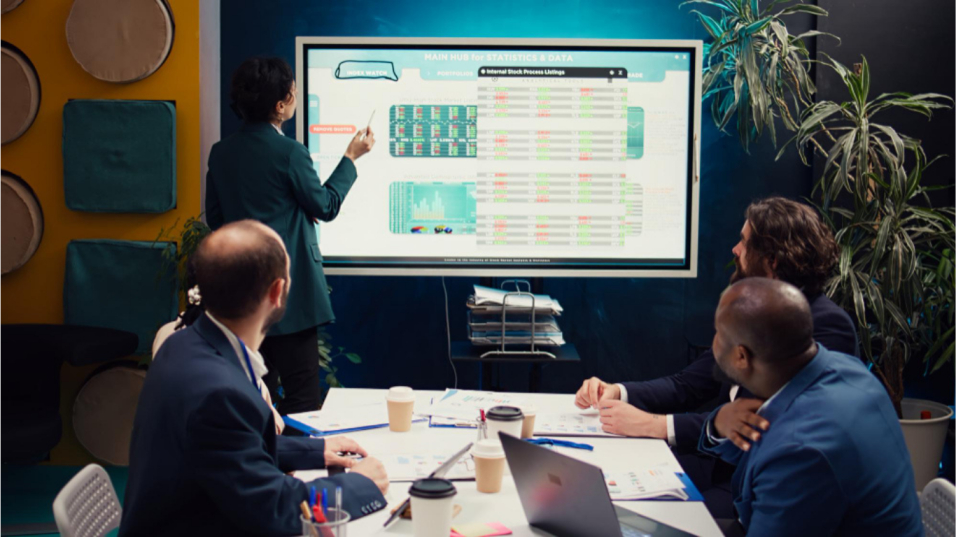The traditional methods of operation in industries are no longer sufficient. Companies must adapt to evolving technologies and processes to maintain competitiveness and resilience. This shift toward modern solutions enhances efficiency and improves worker satisfaction and safety. Organizations can develop a more adaptable workforce that is better able to handle obstacles by adopting a forward-thinking strategy.
The Right Tools For The Right Industries
Selecting appropriate tools for specific industries is key to effective operations. Different sectors have unique requirements that necessitate tailored tools for enhanced productivity. Construction sites benefit from robust machinery tailored for heavy lifting and precise measurements, while the healthcare sector requires tools that prioritize patient care and safety.
Organizations must assess their distinct needs and invest in tools that maximize their potential.
An example of such a tool is using ergonomic lifting equipment, which significantly reduces the risk of injuries associated with heavy loads. Ergonomic equipment contributes to worker health and boosts productivity by minimizing downtime due to injuries. Likewise, more advanced technologies, like AI and machine learning applications, can streamline operations and improve decision-making processes.
Adopting Efficient Processes
Implementing efficient processes is just as crucial as having the right tools. Streamlined workflows, clear communication channels, and automated systems can dramatically enhance productivity. Teams need to define their processes clearly to avoid confusion and delays.
One effective strategy for optimizing processes includes adopting agile methodologies, which allow teams to adapt to changes. This approach fosters collaboration, enhances problem-solving, and encourages innovation among team members. Companies are increasingly recognizing the need to empower their employees to experiment with new ideas and to iterate frequently on their work.
Training and Development Initiatives
The importance of continuously developing skills among employees cannot be overstated. As industries evolve, so too must the skillsets of the individuals within them. Companies need to invest in training programs that align with their strategic objectives. This ensures that workers are aware of new tools, technologies, and are proficient in utilizing them effectively.
Incorporating a mix of hands-on learning and theoretical understanding can help bridge the gap between learning and real-world application. Mentorship programs and workshops led by experts can provide invaluable insights and hands-on experience tailored to specific job roles. Students gain practical knowledge when they engage in real-world projects. Educators can reinforce concepts by linking classroom lessons to current industry challenges.
Creating a Culture of Innovation
An innovative mindset within an organization fosters adaptability and resilience. Encouraging employees to share ideas and challenge existing processes cultivates an environment ripe for improvement. Leadership plays a critical role in shaping this culture; by prioritizing transparency and allowing for calculated risk-taking, companies can harness the potential of their workforce.
Organizations should celebrate success stories and lessons learned from failures alike. This validation reinforces a sense of community and encourages continuous improvement. Focused innovation workshops or hackathons can stimulate creativity and lead to breakthroughs in operations or product development.
Providing time and resources for experimentation, such as dedicated innovation hours, empowers employees to explore new solutions without fear of failure. Cross-functional collaboration should be encouraged, as diverse perspectives often spark original thinking.
Adapting to Remote Work Trends
Given the recent shifts toward remote work, organizations are compelled to enhance their approaches to collaboration and communication across dispersed teams. Implementing digital tools that facilitate seamless interaction is important for maintaining productivity. Video conferencing platforms, project management software, and cloud storage solutions help teams stay connected and aligned despite physical distances.
Creating a virtual work culture where employees feel supported is critical. Regular check-ins and peer recognition initiatives can nurture camaraderie and accountability within the workforce. Encouraging flexibility in work hours can cater to employees’ varying schedules and enhance satisfaction.

Utilizing Data-Driven Insights
Employing data analytics can transform organizational strategies and decision-making. By analyzing performance metrics, employee feedback, and market trends, businesses can identify areas for improvement and optimize their operations.
Using data to inform strategic decisions allows companies to respond proactively to challenges. The implementation of data-driven processes aids in refining existing workflows and uncovering new growth opportunities.
Real-time dashboards and reporting tools offer leadership teams immediate visibility into key performance indicators. Continuous access to metrics facilitates faster, more informed decision-making across departments. Integrating predictive analytics can help organizations forecast outcomes and allocate resources more efficiently, driving sustained business success.
Future-proofing a workforce requires a multi-faceted approach that encompasses the adoption of appropriate tools, efficient processes, and a commitment to continuous learning and innovation. Organizations that embrace these elements will navigate changes with greater ease and thrive in the evolving business landscape.
Blog as received in the mail






























